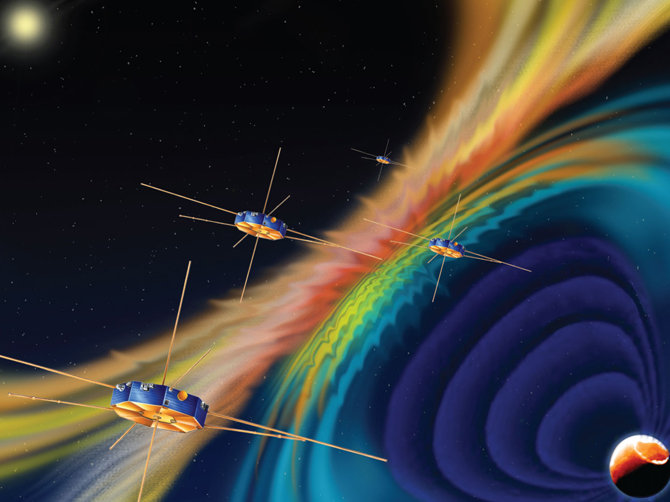FAULHABER motors to be utilized in NASA MMS research project

Photo by Dr. Fritz Faulhaber GmbH & Co. KG
In NASA’s “Magnetospheric Multiscale (MMS)” research project, motors from FAULHABER will help in examining the earth’s magnetic field. The MMS mission should for the first time provide a three-dimension image showing how near-earth magnetic fields disconnect and reconnect. These processes generate huge amounts of energy which can also significantly affect terrestrial electronics systems.
The MMS mission consists of four identical space probes that are to be launched / were launched into space from Cape Canaveral on 12th March. Once in orbit, each probe will send out four spherical magnetic field sensors tethered to the probe by 48 metre long cables in order to cover a large measuring range. The cables are unwound by FAULHABER stepper motors as soon as the spacecraft reach their target area.
“You don’t get a second chance in space flight”, explains Michaël Raymond from FAULHABER PRECISTEP in La Chaux-de-Fonds (Switzerland), “the devices on board the probe must perform their task with absolute reliability. For this reason, NASA carried out a special audit on our production and was convinced that our motors satisfy its high requirements in every respect.”
These requirements included high performance at a very low weight – every gram counts when a rocket is launched – and in as compact a design as possible. The motor and precision gearhead are only just longer than 56 millimetres. Nevertheless, the unit generates up to 0.5 newton metres at the output shaft.
To ensure that they can operate perfectly in space, the ball bearings of the motors and the gearwheels of the gearheads are lubricated with a special lubricant which can also fulfil its function in a vacuum and at extremely low temperatures. Furthermore, the units comprising motor and gearhead have been given vent holes to allow the air trapped in the housing to escape when they leave the earth’s atmosphere so that unwanted differences in pressure are avoided.
The space probes will fly in various three-dimensional formations in areas of the earth’s magnetic field in which so-called magnetic reconnection takes place. This physical process causes the structure of a magnetic field to change explosively, releasing huge amounts of energy.
The MMS mission is to provide for the first time a three-dimensional image of these processes. They are a decisive factor in “space weather” which in turn affects communications satellites in orbit and electronic equipment on earth. Using the data from the MMS probes, the scientists involved also expect to better understand fundamental processes in the entire universe.
For more information, please visit http://www.faulhaber.com.
News Categories
- » NEWS HOME
- » Automation & Robotics
- » Industry 4.0
- » Material Handling
- » Sensors
- » Quality & Testing
- » Machine Vision
- » Laser & Optics
- » Metalworking
- » Motion Control & Drives
- » Hydraulics & Pneumatics
- » Process Industry
- » Renewable Energy
- » Agriculture
- » Home & Office Furniture
- » Environmental Tech


